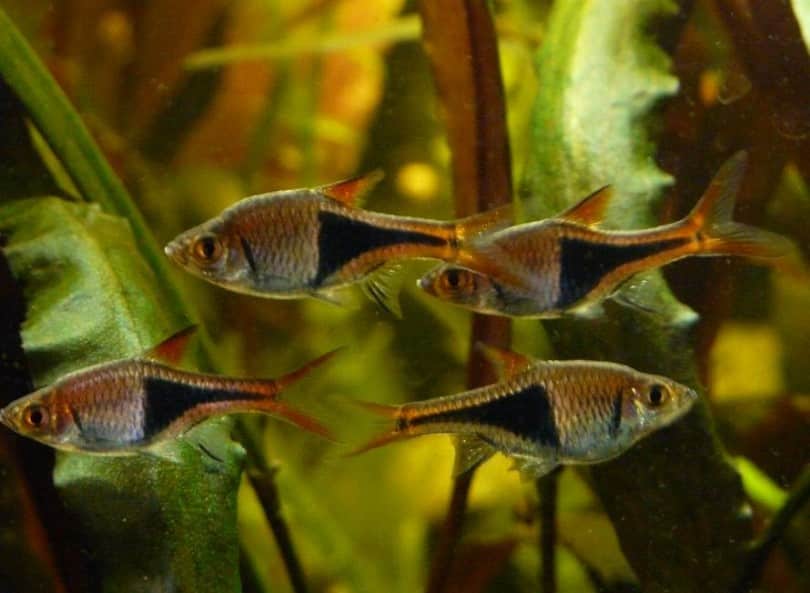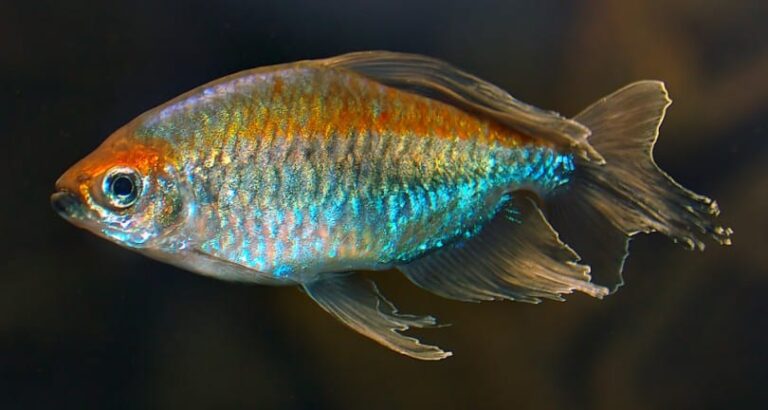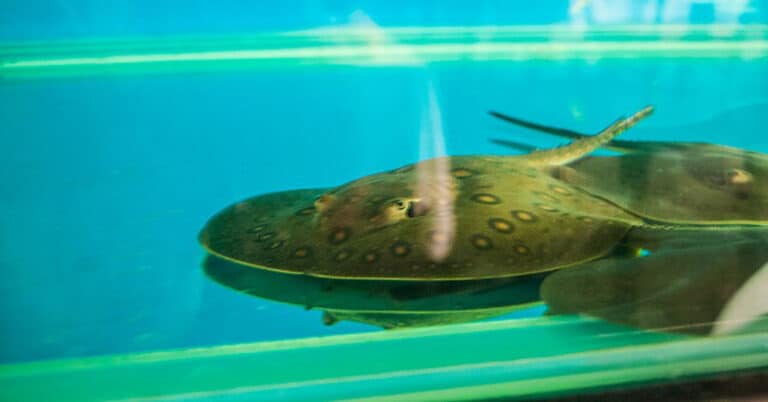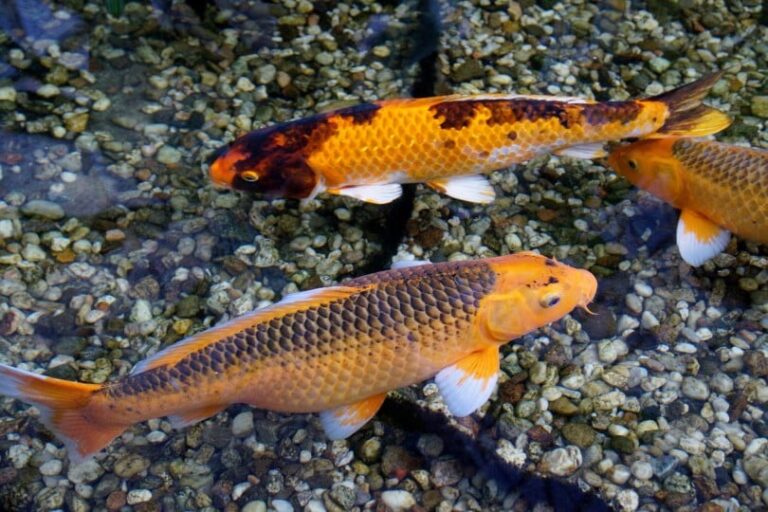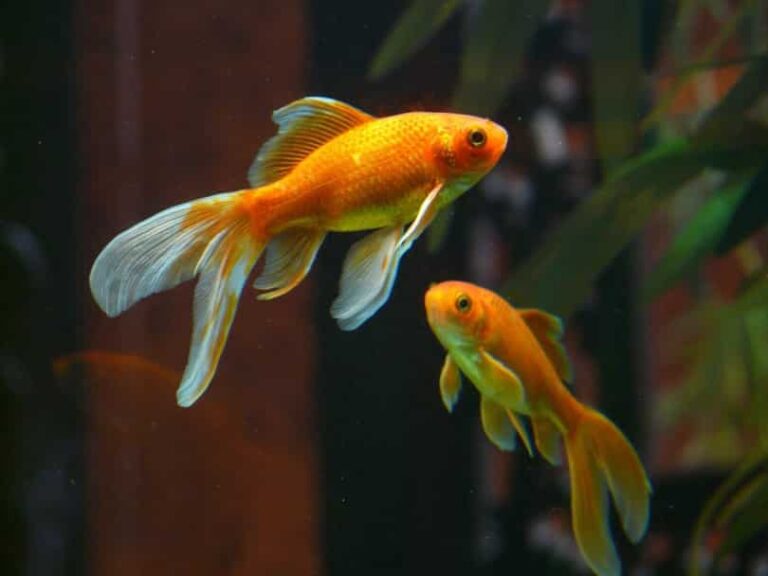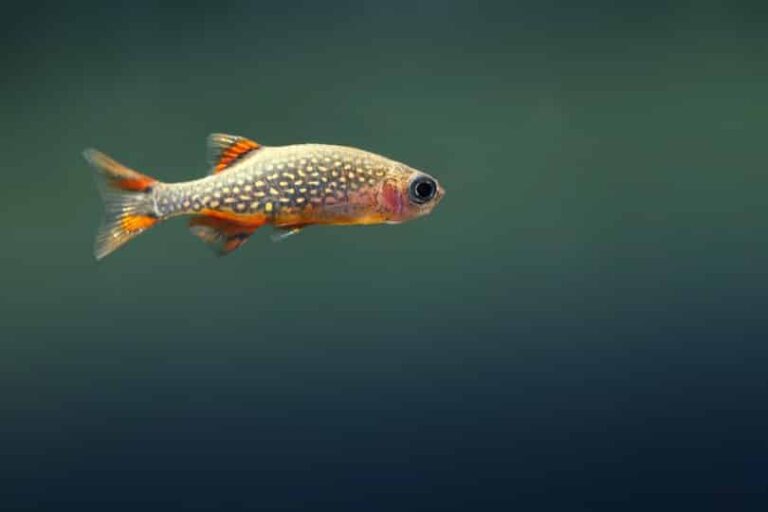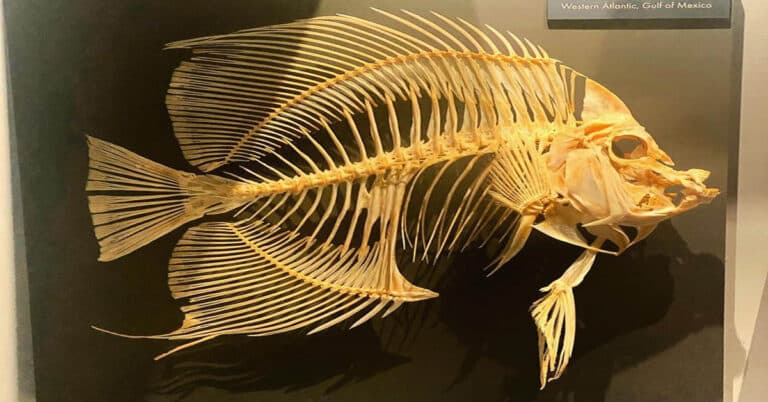Harlequin Rasbora
Scientific classification
| Kingdom: | Animalia |
| Phylum: | Chordata |
| Class: | Actinopterygii |
| Order: | Cypriniformes |
| Family: | Cyprinidae |
| Genus | Trigonostigma |
| Species: | T. Heteromorpha |
| Binomial name: | Trigonostigma Heteromorpha |
Harlequin Rasbora, whose scientific name is Rasbora Heteromorpha, is a tiny fish, of the subordinate family Rasborinae, which hails from the Cyprinidae group. The typical name Heteromorpha is the Greek translation of “differently shaped” indirectly, referring to the difference in the shape of this species with respect to the other associates of the Rasbora genus. This led to several other factors, which include the dissimilarity in their breeding mechanism. Following this, the fish was allotted a new genus, Trigonostigma, and was scientifically named Trigonostigma Heteromorpha.
The Harlequin Rasbora species have grown popular in the aquarium trade and turned into the most commonly found species of all Therasboras. They are a favorite choice of all fish hobbyists and have been introduced to the fish aquarium world since 1934.
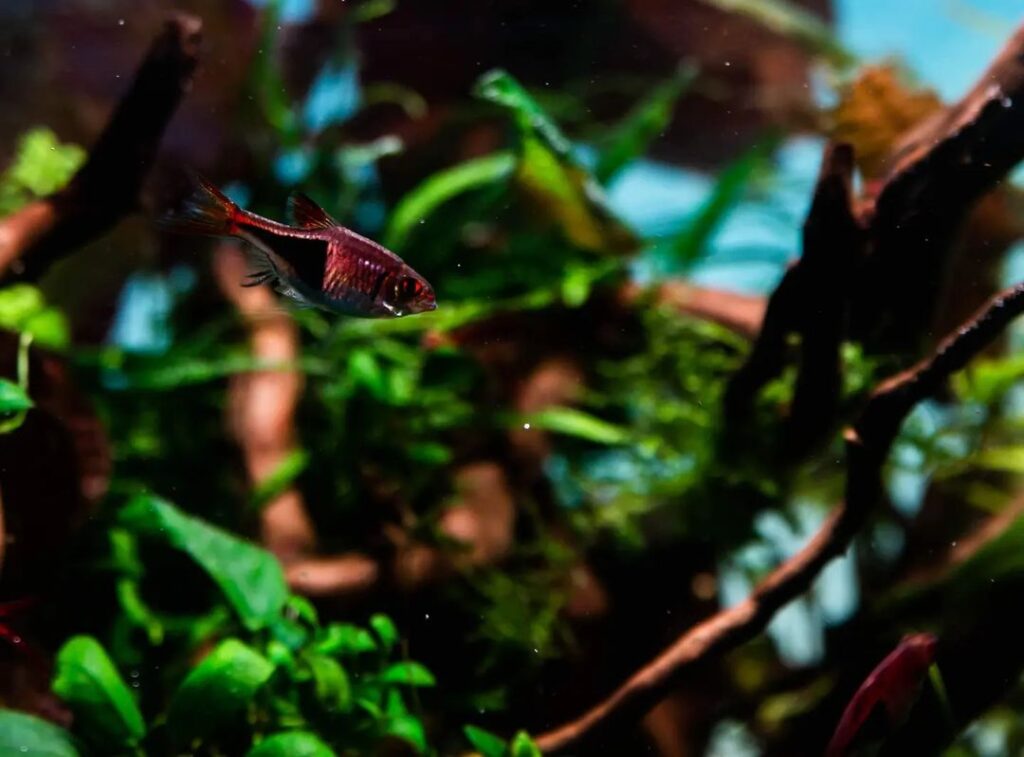
Habitat and range
Harlequin Rasboras inhabit a vast area. We see them in vast areas of the Southeastern regions of Asia and several Oceania islands. The regions where we see Harlequin Rasbora are countries like Sumatra, Thailand and Indonesia. In spite of this wide distribution, they are limited to the fresh waters. We never see them in ocean waters or brackish water.
The Harlequin Rasbora species are mainly found in the regions like Sumatra, Malaysia, Singapore and southern parts of Thailand. They are endemic to the streams, lakes and other water bodies situated in the swamp forest areas.
Description
This tiny Harlequin Rasbora fish grows to a full length of 2 inches (5 cm.) When fully matured, it looks bigger than its relatives, and somewhat tall, with the belly of convex shaped.
The Harlequin Rasboras differs in their appearance, based on the region from where they come. When compared to the fish from the population of Sunda island and Singapore islands, those from Thailand are usually slimmer and smaller. There is a belief that the reason for the above divergence is that either the fish that is captive-bred is released into the waters or they might have escaped from the fish farm. With proper care, this fish survives in an aquarium only for 5 to 6 years.
The body of the Harlequin Rasbora species has a lozenge shape, and from head to caudal peduncle, the basal shade is orange-pink. The body color changes depending on various factors like population, temperature, dH level etc. Half of the posterior part of the Rasboras body displays a rough triangular marking in a black shade. This large marking begins exactly below the portion, where the dorsal fin is attached, which is commonly known as “black wedge”, and it narrows towards the caudal peduncle’s terminal end. The articulation of the pelvic and pectoral fins are somewhat common in all species of Cyprinids, as the pelvic fins start from the ventral portion, where the ventral line is visible near the dorsal fin, and the pectoral fins are just behind the gill cover or operculum. This relation of the pectoral and pelvic fin can be commonly seen in all Characins and Cyprinids species, and is a distinguished attribute of all the types of Ostariophysans (the ones, that possess an auxiliary organ for recognizing sound, and consists of Weberian Ossciles, a bunch of internal bones)
The caudal, anal, pelvic and dorsal fins have a red color. The specialty of the caudal fin is that the red color is seen on the outermost rays of the forked fins. The tail fin is more hyaline in the innermost section.
At first, the other two species, namely, Trigonostigma Hengeli and Trigonostigma Espei were recognized as the subspecies of the Trigonostigma Heteromorpha due to their nearly similar appearance. But these species had a more slender and sleek body than the Heteromorpha species. Even the black marking found on the back of the Heteromorpha species is different from these species, instead of the rough triangular marking, you can find a horizontal stripe on the other two species, which narrows near the caudal peduncle, and is more extended downwards and wider in the lower part of the dorsal fin.
The color of the body varies. The colors vary from light pink, dark red to copper orange, right from the top to the bottom. On the rear half portion, there is a black colored triangular marking.
Breeding
The Harlequin Rasbora does not scatter its eggs, like its cousins do; it deposits its eggs underneath a wide leaf. In nature the leaf used is a Cryptocoryne one (Wiki: a genus of aquatic monocot plants from the family Araceae).. Normally it takes sufficient time in spawning; there are chances for them to spawn for days, prior to mating. At a time they deposit 6 to 12 eggs, depositing a total of 100.. Characteristically a mating results in 80 to 100 eggs. Following fertilization, it is essential to separate the parents from the eggs, since chances are there for the parents to consume them.
Breeding at home
Tank
Under normal society situations, they are fine in an aquarium. It is essential to keep them in schools with a minimum of 6 fish, because they develop stress when they are kept alone.. Among themselves, there are chances for them to chase and to nip one another, but normally they leave alone the other fish. They go along with other fish that are very small, and eat them. For breeding, place them in separate tanks.
Water Conditions
There are no specific requirements for them while in the aquarium. They are cozy with a pH of 5 to 7. Normally they are fine with a temperature around 70 to 77 F. But at the time of breeding, there is a restriction in the temperature. For breeding, they require water in the low 80s. What is more essential is a supply of mild acidic water, such as the peat bogs available in their wild habitat.
Nutrition
Feeding them is not a problem, all the species are adapted to flake foods and they live splendidly in captivity. In spite of living in aquariums, they persist in their greedy habits. When you feed them, they come into a frenzy, and dash out for the live feed. Anything is fine, however small blood worms, Daphnia, wingless fruit flies, glass worms and also insects like garden ants are fine for them.
Glow light set up
The Harlequin Rasbora is a moderately sporting variety, most of the time they are found either at the top part or at the middle of the aquarium. For a number of 10 plus, give them sufficient open area for swimming around and in order to prevent them from jumping out of the aquarium, a firm cover is required. The minimum size of an aquarium is 20 gallon; however a 30 gallon or even bigger one is always better. The length is more important for them to swim around freely. The Harlequin Rasbora adjusts to all sorts of situations in the aquarium, however when placed in water that is lightly acidic and soft, they color becomes stunning. The Harlequin Rasbora hails from quite slothful water, as such they do not requires a strong filtration, however provide them with good filtration process.

Having discovered a fondness for insects while pursuing her degree in Biology, Randi Jones was quite bugged to know that people usually dismissed these little creatures as “creepy-crawlies”.

